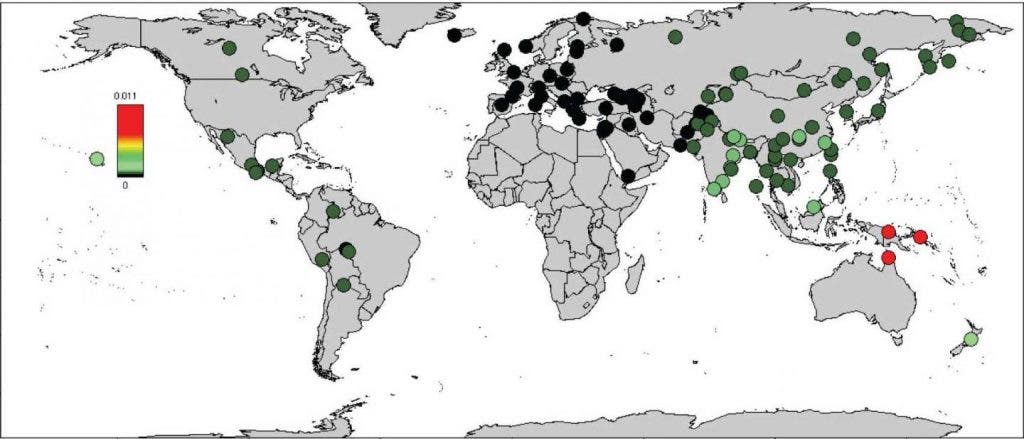Recent years have brought along a paradigm shift when it comes to understanding our relatives, the Neanderthals and the Denisovans. Last week, a team published results showing that some areas in South-East Asia carry significant Denisovan DNA and now, another team has published a map of that DNA spread.

This map shows the proportion of the genome inferred to be Denisovan in ancestry in diverse non-Africans. The color scale is not linear to allow saturation of the high Denisova proportions in Oceania (bright red) and better visualization of the peak of Denisova proportion in South Asia. Credits: Sankararaman et al./Current Biology 2016
We know quite a bit about Neanderthal DNA, although anthropologists have had to rehash some of their theories. Most notably, not only did humans and Neanderthals interbreed, but they did so much earlier than previously thought. It was first shown that humans interbred with Neanderthals 50,000 years ago, then 100,000 years ago. OK, so where do Denisovans fit into this picture?
Denisovans are an extinct species of human in the genus Homo. In March 2010, scientists announced the discovery of a finger bone fragment of a juvenile female who lived about 41,000 years ago. The remains were found in the remote Denisova Cave in the Altai Mountains, Siberia, a cave which has also been inhabited by Neanderthals and modern humans. DNA studies confirmed this was a new species, related to Neanderthals but ultimately different. However, while Neanderthal DNA is common in most non-African humans, Denisovan DNA is much more elusive. There is a notable exception however: the inhabitants of Melanesia, a subregion of Oceania, have between 4% and 6% Denisovan DNA.
This is intriguing because it shows that even though the remains of Denisovans were found in Siberia, the only people with significant Denisovan DNA live in Melanesia – so humans interbred with Denisovans somewhere in that area (or their descendants did).
“There are certain classes of genes that modern humans inherited from the archaic humans with whom they interbred, which may have helped the modern humans to adapt to the new environments in which they arrived,” says senior author David Reich, a geneticist at Harvard Medical School and the Broad Institute. “On the flip side, there was negative selection to systematically remove ancestry that may have been problematic from modern humans. We can document this removal over the 40,000 years since these admixtures occurred.”
They found that individuals from Oceania possess by far the highest percentage of archaic ancestry, while only south-east Asians have significant Denisovan ancestry (and again, more than previously believed). When you consider that most people today have some Neanderthal DNA, but people of African descent don’t, you end up with a pretty complicated problem.
“The interactions between modern humans and archaic humans are complex and perhaps involved multiple events,” Reich says.









